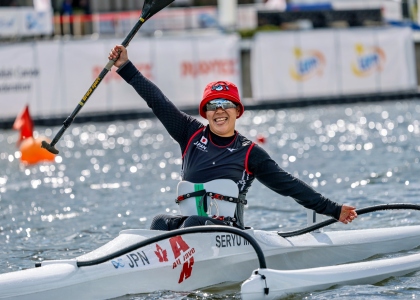The International Canoe Federation’s Paracanoe committee has redrawn classification guidelines for the Paralympic discipline of Va’a, following several years of intensive research.
Para Va’a was officially added to the Paralympic program last year, and will make its Games debut in Tokyo in 2020. There will be one women’s event and two men’s events.
The new discipline is competed in a Va'a boat (outrigger canoe), which has an ‘ama’ as a support float on one side. Va'a is the name of the paddling discipline which has its origins in Polynesia.
Para Va’a races were first held at the 2009 World Championships in Canada, but it was not accepted as a discipline at the Rio Paralympics because it was deemed not enough research had been done into the sport.
The new classification guidelines remain provisional until they are officially sanctioned by the International Paralympic Committee. The full details, including the new scoring system and the research history and formula, can be found here.
In the revised classification system, athletes will mainly be allocated a class based on their trunk function assessed during the dynamic tasks of the trunk test; no dynamic trunk function, partial dynamic trunk function and good dynamic trunk function.
The athletes allocated in the lowest functioning class, VL1, should therefore have no dynamic trunk function which is defined as not being able to sit upright on a bench with the legs hanging whilst the thighs and/or pelvis are secured and not moving the trunk in flexion, extension, rotation and lateral flexion.
These athletes should also not have any leg function.
The athletes with the highest function will be allocated the VL3 class and will include the athletes with full dynamic trunk function or almost full dynamic trunk function.
The revised minimal eligibility criteria for para-va’a includes separate criteria for the legs and trunk. The minimal eligibility criteria for the legs is a loss of 10 points or more in one leg or a loss of 11 points or more over two legs in the leg test.
This corresponds, for example, to an athlete with above knee amputation with no function in the ankle or the knee or an athlete with partial leg function in both legs.
In addition to the minimal eligibility criteria for the legs, a minimal eligibility criterion for the trunk has also been established to include para-athletes with an impairment that affects the trunk more than the legs.
National Federations and National Paralympic Committees have until February 26th to provide comments on the proposal to jhedwards@canoekayak.ca




